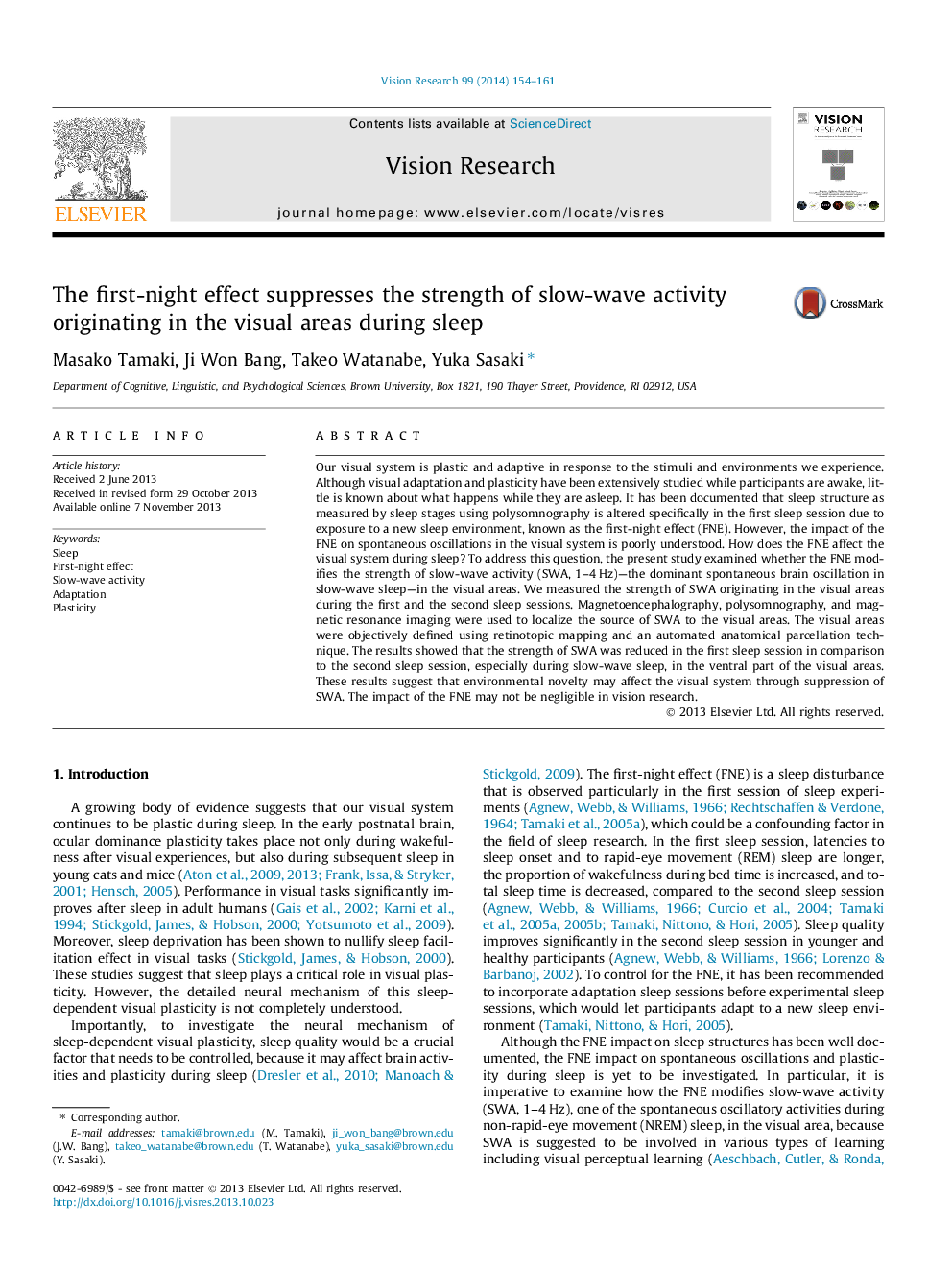| کد مقاله | کد نشریه | سال انتشار | مقاله انگلیسی | نسخه تمام متن |
|---|---|---|---|---|
| 6203442 | 1603195 | 2014 | 8 صفحه PDF | دانلود رایگان |
- We examined the impact of the first-night effect on the visual areas during sleep.
- We compared the strength of MEG slow-wave activity between two sleep sessions.
- Slow-wave activity was reduced in the visual areas in the first sleep session.
- The first-night effect modulates the visual system during sleep.
Our visual system is plastic and adaptive in response to the stimuli and environments we experience. Although visual adaptation and plasticity have been extensively studied while participants are awake, little is known about what happens while they are asleep. It has been documented that sleep structure as measured by sleep stages using polysomnography is altered specifically in the first sleep session due to exposure to a new sleep environment, known as the first-night effect (FNE). However, the impact of the FNE on spontaneous oscillations in the visual system is poorly understood. How does the FNE affect the visual system during sleep? To address this question, the present study examined whether the FNE modifies the strength of slow-wave activity (SWA, 1-4Â Hz)-the dominant spontaneous brain oscillation in slow-wave sleep-in the visual areas. We measured the strength of SWA originating in the visual areas during the first and the second sleep sessions. Magnetoencephalography, polysomnography, and magnetic resonance imaging were used to localize the source of SWA to the visual areas. The visual areas were objectively defined using retinotopic mapping and an automated anatomical parcellation technique. The results showed that the strength of SWA was reduced in the first sleep session in comparison to the second sleep session, especially during slow-wave sleep, in the ventral part of the visual areas. These results suggest that environmental novelty may affect the visual system through suppression of SWA. The impact of the FNE may not be negligible in vision research.
Journal: Vision Research - Volume 99, June 2014, Pages 154-161
